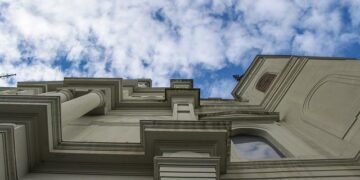BySarah Freeman
Published September 19, 2023
• 8 min read
With its storybook alpine scenery, cultured lakeside cities, and miles of peerless pistes, Switzerland packs a lot into its landlocked borders. We consulted resident experts, from museum curators and musicians to hiking guides and authors, for their insider tips.
Wine hike in Ticino
Switzerland grows an impressive number of grape varietals (252, to be exact) for its diminutive size. “For centuries, Swiss winemakers have tended vines to help preserve the land and pass it on to the next generation, in a place where mountains and waterways are continually vying for space,” says Ellen Wallace, author of Wine Hiking Switzerland.
While most visitors flock to the Valais’ vertiginous vineyards, it’s the Italian-speaking, Ticino, the country’s southernmost canton (region), that’s won Wallace’s heart. Reached via Monte Carasso cable car, the six-mile trek from Mornera station to family-run Settemaggio Winery promises 14th-century church frescoes and chestnut forests, capped with a tasting of Ticino’s signature white merlot.
Be serenaded by the soundtrack of the Alps
For centuries, alpine herders and villagers would communicate across valleys with nearly 10-foot-long horns hewn from fir trees. “Up in the mountains it sometimes creates echoes,” says Fritz Frautschi, a renowed alphorn player (and former Swiss Army cornetist), of the wooden wind instrument’s soft and velvety sound, which can carry up to six miles. Played solo, in church choirs, or as part of an orchestra, it’s at its most lyrical when blown in the great outdoors. Hear it for yourself at one of Switzerland’s folkloric events or Nendaz’s annual Alphorn Festival, where the music of a hundred alphornists rings out above the Rhône River valley in July.
(Switzerland’s yodeling tradition is changing. Here’s how to experience it.)
Float down an urban river
It’s no secret that Zurich and Geneva’s lakeside residents enjoy bathing en plein air, but the Bernese have a more freestyle approach. Snaking through the Swiss pseudo-capital is the 180-mile-long Aare River, where locals (including Bern’s mayor) float down its fast-flowing turquoise course come summertime. “It’s total relaxation,” says retired journalist Laura Fellmann, whose “lunch break dips” became a three-decade daily meditation. For calmer waters, she suggests entering the glacial-fed Aare (pronounced Ar-reh) just upstream from the Lorraine Bad, then warming up afterward in the riverside public bath’s tented sauna. “It’s even more magical at night,” she says.
Get to know Geneva’s Italian side
“We’re in another world here,” says Gianna Mestermann, guide and long-time resident of Carouge’s old town. Although only an orange tram ride from downtown Geneva across the Arve River, this bohemian neighborhood—scattered with chic pavement cafés and secret courtyard gardens—feels more Mediterranean than Swiss, says Mestermann. Built to rival Geneva by order of the King of Piedmont-Sardinia in the 1700s, “[Carouge] was constructed not with arms, but with craftsmanship,” she says. Mestermann’s one-of-a-kind tours are a chance to meet Carouge’s artisans in their workshops—like 92-year-old mechanic-trained clockmaker Jean Kazes and titanium jewelry crafter Igor Siebold.
(A master of the grandfather clock reveals time’s hidden history.)
Hit some of Europe’s greenest slopes
Skiing and sustainability may seem strange bedfellows, but Graubünden’s Flims Laax Falera resort is on track to change that. “We have a really ambitious vision,” says Reto Fry, the environmental officer of Weisse Arena Gruppe, who operates the year-round resort. Everything from its Riders Hotel’s snow-proofed solar-paneled roof to the biodegradable ski wax is inching them closer to reaching carbon neutrality by 2030. Powered entirely by regional renewable energy, the lift system is set to get even greener when a rideshare-style 10-seater gondola launches in December. Fry says one of his favorite hangouts is the resort’s skate park, planted with “hundreds of different kinds of local flowers for wild bees.”
Swath yourself in silk
“The success story of silk has been forgotten,” says Andrea Franzen, curator at Zurich’s Swiss National Museum. Long before the country’s wealthiest city grew into a global banking hub, it wove its fortune from the lustrous fabric, becoming the world’s second largest silk manufacturer by the mid-19th century. Visitors (by appointment) can pour over vintage fashion photographs and leather-bound pattern books from a 4,000-piece textile collection housed in the museum’s study room. Most treasured are the Abraham archives, bequeathed by Swiss silk merchant Gustav Zumsteg, a household name in Paris Haute Couture during the 1950s. A standout for Franzen is the original sketch by Yves Saint Laurent of Iranian princess Farah Diba’s Dior wedding gown, designed with Abraham silk.
Paraglide above Zermatt
For a different perspective on the Matterhorn, Zermatt’s famously crooked peak, take to the air. Paragliding company FlyZermatt takes visitors from glaciers to green pastures, above this resort town’s 370 miles of snow-sure slopes and hiking paths. Filmmaker and hobbyist paraglider Katie Reisz recommends the 35-minute Elite flight, which starts at almost 4,000 meters, Europe’s highest lift-accessed take-off. “There’s quite a few bearded vulture [breeding] pairs in Zermatt, and they really like to fly with us,” she says.
(The Alps’ oldest hamlet has a history that surprises even the locals.)
Savor zero-waste cuisine
With 26 Michelin Green Star restaurants (and counting), there’s never been a better time to take a bite out of Switzerland’s sustainable fine-dining scene. On the outskirts of Lausanne, foodies can savor zero-waste fare on the site of a ruined 15th-century abbey. One of the newest additions to the green-leaning list is Zermatt’s Brasserie Uno. Here, chef Luis Romo’s “surprise tasting menu” puts a global spin on regionally sourced ingredients, many of which are fermented or foraged.
Trek fragrant trails in Doubs
“The Doubs is Switzerland in secret, far away,” herbalist and hiking guide Sylvain Garraud says of the Swiss-French chalk river and its namesake tri-canton-spanning Nature Park. “In autumn it has a temperate rainforest atmosphere,” he continues. In spring, scented fields ripe for exploring, but you need to know where to follow your nose. Garraud’s favorite two trails are both found in the north end of the park.The first threads “between vineyards and garides [gardens]” along the slopes above Lake Biel, while the second follows the crests of the Jura Mountains between Tête de Ran and Mont Racine, a trek best enjoyed during the summer solstice, he says.
(For more tips on what to do in Switzerland, see our Switzerland Explorer’s Guide.)
Sarah Freeman is a freelance travel journalist who splits her time between Northern England and Switzerland’s Valais canton. Follow her on Instagram.
>>> Read full article>>>
Copyright for syndicated content belongs to the linked Source : National Geographic – https://www.nationalgeographic.com/travel/article/visiting-switzerland-heres-what-the-locals-love






























